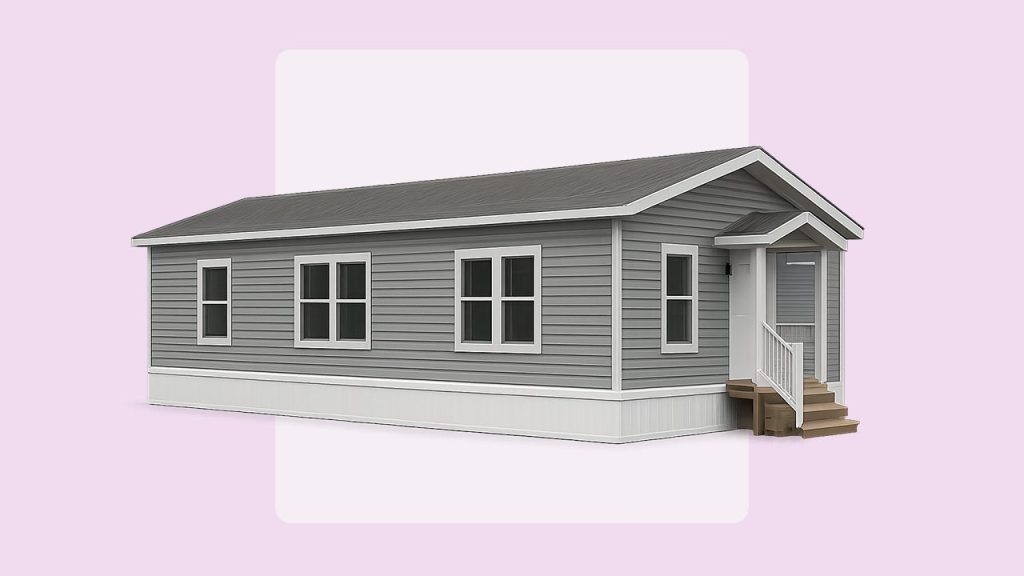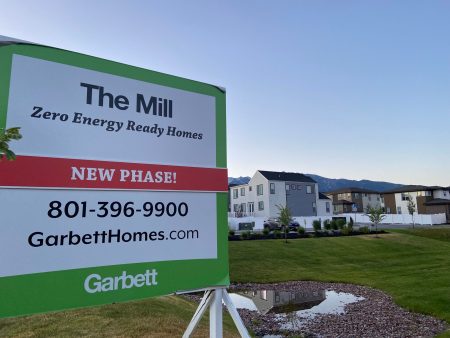Key takeaways
- A manufactured home is a prefabricated house that’s built in a factory and then installed on a plot of land.
- They cost much less than traditionally built homes, so they can be appealing to budget-conscious buyers.
- But they can be difficult to finance, and their value does not appreciate over time like a traditional home’s would.
The price tags for homes are high these days. And if you want to build a home from the ground up, the costs can add up quickly: The median price of a new-construction house in June 2025 was over $400,000, according to the U.S. Census Bureau.
But there’s a cheaper alternative: the manufactured home. These prefab residences are factory-built, then installed on a lot — often for a fraction of the price of a traditional new-build home. In today’s challenging housing market, that can be an appealing option for budget-conscious house-hunters.
What is a manufactured home?
A type of prefabricated residence, the manufactured home, as its name implies, has its standardized parts constructed and assembled in a factory. It’s then transported and affixed to your home site. In contrast, a traditional home is built from the ground up directly on your lot.
While traditional homes may have a basement and usually sit on a foundation, manufactured homes typically don’t. But that doesn’t mean a manufactured home is on wheels: They can be set up at their permanent location on concrete blocks, metal piers or other substantial tie-downs.
“Our home is built on 75 concrete footings instead of a foundation, and it’s designed to withstand hurricane winds up to 160 miles per hour,” say Terrianne and Jinx Kidd, manufactured homeowners in the Outer Banks area of North Carolina. Terianne says the builder gave them plenty of customization options and “built it indoors, to our specifications.”
A manufactured home can have many of the hallmarks of a traditional home build. This includes lumber framing, fiberglass insulation, PVC plumbing, drywall and wood flooring. They can boast fancy trims and features, and homeowners can often choose between multiple floor plans and select everything from countertops to tile.
Manufactured homes vs. mobile homes
Manufactured homes are often referred to as mobile homes — and the two are, in a sense, the same thing. Both types of properties are regulated by the Department of Housing and Urban Development (HUD). The main difference between a manufactured home and a mobile home is the date it was built: Homes built in a factory before June 15, 1976, are considered mobile homes, while factory-constructed homes built after that date are called manufactured homes. Mobile homes, being older, are often less expensive to buy than contemporary manufactured homes.
Modern manufactured homes are still “mobile” in that they have a trailer hitch and axles attached to a steel beam that runs their length — this is what allows them to be transported to the home site. They are considered a vehicle for tax and zoning purposes, because, technically, they can be relocated.
Other than that, they often bear little resemblance to the rectangular, metallic trailers of old. These homes are solidly built, can be affixed to the land in fairly permanent ways, and often run as large as 2,000 or 3,000 square feet (what the industry calls double- or triple-wide).
Manufactured homes vs. modular homes
Manufactured homes are also often confused with modular homes. Both are forms of prefab housing, and both have standard features that can be customized to varying degrees.
However, they differ in significant ways, starting with the way their construction is regulated. Manufactured homes are subject to HUD standards, which regulate their design, energy efficiency and safety, while modular homes are subject to local, state and regional building codes.
Manufactured homes are built entirely on a steel chassis, like a car, and transported already-built to their site. In contrast, modular homes are constructed in pieces and assembled like a puzzle on the property. They generally have permanent foundations and a roof that’s pitched per local regulations. A modular home might even have a basement or crawl space.
Because they are often subjected to more serious code specifications, a modular home may be more expensive than a comparable manufactured one. According to HomeAdvisor, a modular home costs around $50 to $100 per square foot (not including delivery and installation) for an average of $270,000. Meanwhile, Census data shows that the average sale price of a manufactured home in 2024 was $123,300.
How much do manufactured homes cost?
If you’re looking to buy a house, a manufactured home will be a much less expensive option than a traditional one. According to Census data, their average cost across the country is $123,300 — in contrast, the median price of a traditional new-build home in June 2025 was $401,800.
When you’re figuring out the cost of your manufactured home, though, be sure to consider the following:
- What about the land the home will sit on? If you plan to buy land, this additional cost can add tens of thousands of dollars (or more) to your total. Some homeowners rent a space in a manufactured-home neighborhood instead.
- Do you want luxe upgrades? Just like in a traditional home, switching from linoleum to hardwood flooring, or from laminate counters to granite, will cost you more.
- Are you making it permanent? If you want to put your factory-built home on a fixed base, like the Kidds’ concrete footings, the process can be more costly.
Financing a manufactured home
It’s more difficult to get financing for a mobile or manufactured home than a traditional on-site build. Both online and traditional lending institutions will offer standard financing on modular homes because they meet the same local code requirements as traditional builds, but they often won’t finance manufactured homes.
If you are buying an older mobile home or a non-modular manufactured home, you will probably not be able to finance with a traditional mortgage. Many buyers take out a chattel loan — this type of mortgage is used for movable property, including manufactured homes, and typically carries a higher interest rate than traditional mortgages do.
In some circumstances, FHA and VA loans may be available for qualified borrowers financing manufactured homes.
Pros and cons of manufactured homes
Pros
- Affordability: Manufactured homes cost considerably less than traditional new-build homes.
- Speed: They also take less time to build.
- Easy to maintain: The standardized parts can often be quickly replaced and are typically protected by a manufacturer-offered warranty.
- Flexible floor plans: You’re not restricted to just a rectangle; today’s manufactured homes offer increasingly customizable floor plans.
Cons
- Less equity: Unlike a traditionally built home, manufactured homes are likely to depreciate in value over time.
- Fewer financing options: You will find fewer loan options for most manufactured homes.
- Cookie-cutter design: While design options do exist, manufactured homes are harder to personalize — or update later on — than traditional new construction. And while model homes may be available for viewing, you won’t see your actual home until it arrives.
- Limited availability: Manufactured homes aren’t available everywhere, and some localities may restrict where they can be located.
Why we ask for feedback
Your feedback helps us improve our content and services. It takes less than a minute to
complete.
Your responses are anonymous and will only be used for improving our website.
Help us improve our content
Read the full article here












